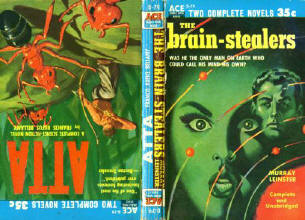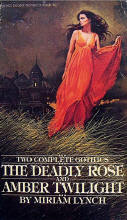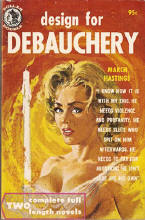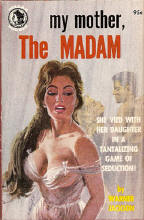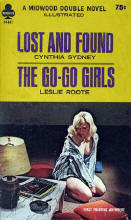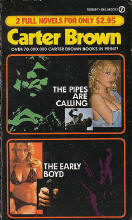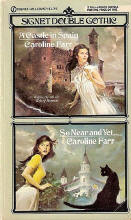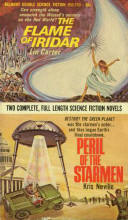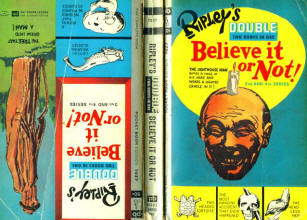|
Double Books
|
||
|
Ace D-79 Ace 01967 Dollar Double 853 Midwood 34611 Signet AE2073 Signet 8057 Belmont B50-759 Pocket Book 7027
|
For as long as publishers have been putting novels between the covers of books, they've been trying to figure out how to squeeze in two. Certain genres are especially prime for this treatment. Science Fiction, which was often written for magazines as "novelettes," were a perfect examples. Ace Publishing, which is what first comes to mind when speaking of "doubles," also found that many westerns and mysteries could be treated with equal respect. But later, more and more "doubles" had a single cover ... especially gothic romances, which all more or less had the same cover illustration, anyway. Several "sleaze" offerings used the technique. Dollar Doubles printed one illustration on each cover, but four of them used the same orientation (the second novel followed the first), while two book used the "flip the book over" orientation, like Ace did. Taking an example from the gothic books, Midwood used generic photos of women for their doubles. The pictures generally had no bearing to either novel. Signet printed several "doubles," in numerous genres. These included works by famous authors of the day, and later they especially used the technique with gothics. Once again, the illustrations were stacked one atop the other. Pocket Book 7027 is a real oddity. This book blatantly rips off the Ace Double concept, with the reader having to turn the book over when he finishes with the first. The only difference is that the title is printed in only one direction on the spine.
|
|
